Most people don’t think twice about the small, everyday actions they perform—lifting a glass of water, signing a document, typing on a keyboard. But for millions of people around the world, including myself, these simple tasks can become sources of anxiety and frustration.
Essential tremor (ET) is one of the most common neurological movement disorders, yet it remains widely misunderstood. Many mistake it for nervousness or stress, while others assume it’s an early sign of Parkinson’s disease. But unlike Parkinson’s, which causes tremors when at rest, ET shows up when you need control the most—when reaching for a cup, holding a pen, or extending a hand for a handshake.
Throughout history, many have lived and thrived with ET. Charles M. Schulz , whose trembling hands became more noticeable as he aged, continued to captivate audiences. John Adams, the second U.S. President, struggled with shaking hands while signing documents, yet his influence on history remained unshaken. Their stories, and my own, are proof that ET does not define a person’s capabilities.
A Personal Journey with Essential Tremor
Growing up, I struggled with uncontrollable tremors that made everyday tasks daunting. Simple things—carrying a plate, pouring water, even holding a spoon—became stressful challenges. In moments of nervousness or pressure, the tremors intensified, making it even harder to keep my hands steady.
At first, my parents didn’t know what to make of it. Since no one in my family had ET, they assumed my shaking hands were just a response to stress. And for a long time, I believed that too. It wasn’t until I was 16 years old that I finally decided I had enough—I needed to know what was happening to me. Visiting a doctor at that point was one of the best decisions I made.
Since then, I’ve worked hard to manage my tremors through lifestyle changes—better diet, regular exercise, and stress reduction. While these have helped reduce the frequency, the tremors haven’t disappeared. They still show up when I least expect them, sometimes in moments where I want to appear my most confident. That’s one of the hardest things about ET—its unpredictability.
For years, I tried to hide my tremors, fearing how people would react. I avoided drinking in front of others, dreaded situations where I had to sign something publicly, and hesitated to shake hands. But over time, I’ve come to realize something important: ET is a part of me, but it does not define me. The more I’ve learned about my condition, the more I’ve embraced it.
What Is Essential Tremor?
Essential tremor is often confused with Parkinson’s disease, but the key difference is when the tremors occur. ET happens during movement, while Parkinson’s tremors happen at rest.
Though often dismissed as a minor inconvenience, ET can progress over time, making simple tasks harder. Studies show that up to 5% of people over 65 experience ET, but it can start at any age, even in childhood.
For those of us with ET, these tremors aren’t just shaky hands—they can make us rethink everything from how we eat to how we interact socially.
Hand Tremors: The Invisible Challenge
The struggles that come with hand tremors go beyond just movement—there’s an emotional side too.
Writing and Signing – Handwriting can become shaky, making signatures unreadable.
Eating and Drinking – Holding a fork steady or lifting a glass without spilling becomes a test of focus.
Using Technology – Typing, swiping, or using a touchscreen can feel imprecise and frustrating.
Professional and Social Interactions – Shaking hands, giving presentations, or even holding a microphone can trigger anxiety.
I used to dread these things. In social situations, I would think twice before holding a drink or handing something to someone. But I’ve come to accept that these tremors are just a part of who I am—and I refuse to let them hold me back.
Even Katharine Hepburn, a Hollywood legend, dealt with this. Her shaky hands and quivering voice were noticeable, yet she never let them stop her from doing what she loved. That, to me, is inspiring.
What Causes Essential Tremor?
Scientists still don’t have all the answers, but they do have some clues:
Genetics – 50% of ET cases are inherited, meaning it can run in families (though not in mine).
Brain Activity – The cerebellum (the part of the brain that controls movement) has irregular activity in people with ET.
Environmental Factors – Some believe toxins or head trauma might contribute, but there’s no solid proof yet.
One of the biggest challenges? There’s no single test for ET. Diagnosis relies on observation and ruling out other conditions like Parkinson’s.
Living with Essential Tremor: Beyond the Shaking
The social and psychological impact of ET is often overlooked. Many people with ET deal with:
Self-consciousness – Worrying that others will notice the tremors.
Social withdrawal – Avoiding situations where tremors might be visible.
Frustration and Anxiety – Feeling like you can’t control your own body.
Even John Adams, one of the United States’ founding fathers, likely had ET. Records describe his struggles with writing due to his tremors. But did that stop him from shaping history? Not at all.
That’s what I remind myself of every day. ET doesn’t define me—it’s just one part of me. The more we talk about it, the less isolating it feels.
For years, I thought of my tremors as a weakness. Now, I see them as a challenge to embrace. Essential tremor may never go away, but it won’t stop me from living my life to the fullest.
The biggest thing I’ve learned? Managing ET isn’t just about controlling the tremors—it’s about controlling the narrative.
Raising awareness about ET is so important. The more people understand this condition, the less fear and stigma exist. Whether it’s through support groups, education, or just being open about our experiences, we can help create a world where shaking hands don’t shake confidence.
“Was mich nicht umbringt, macht mich stärker.”
-Friedrich Nietzsche
